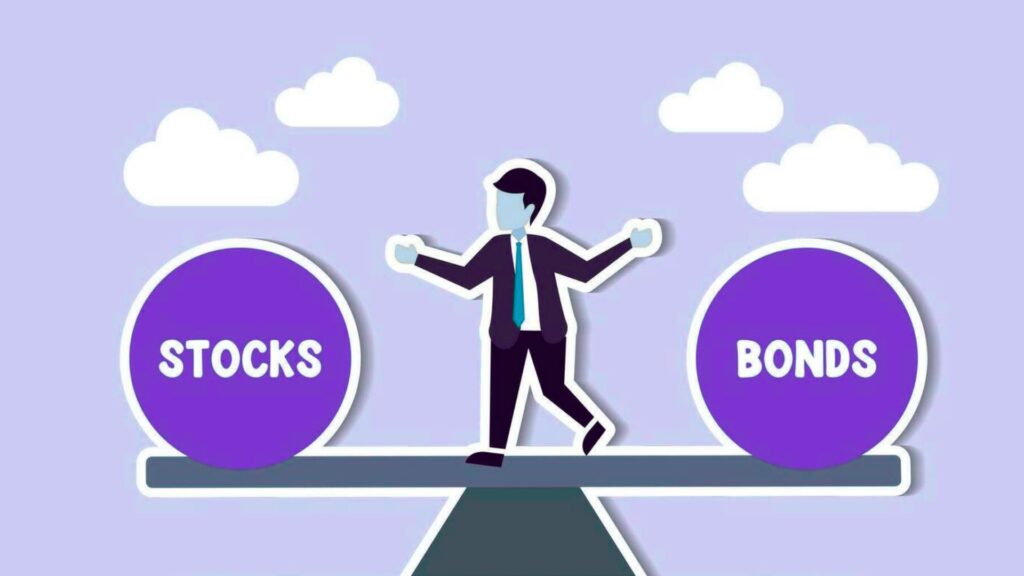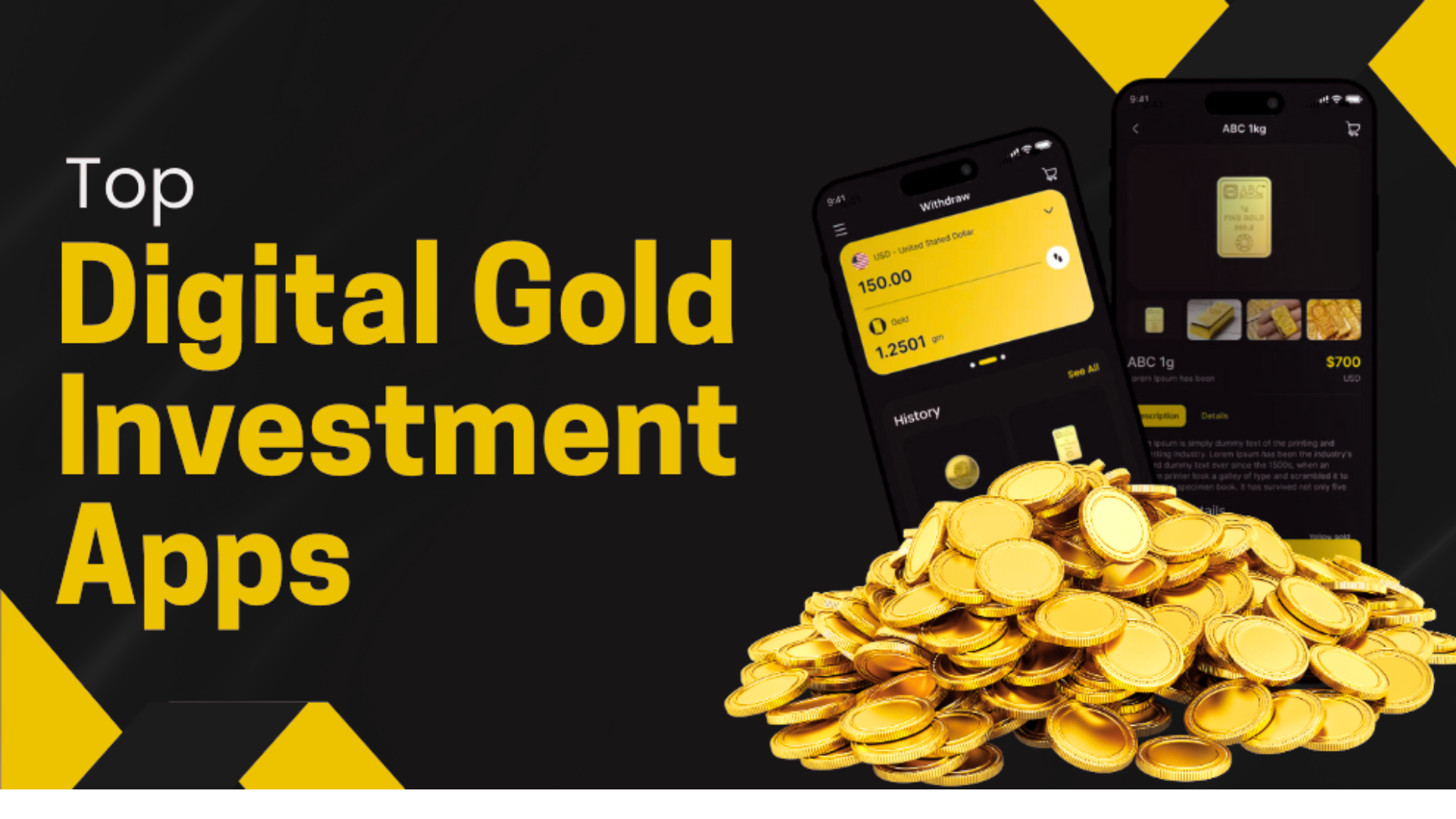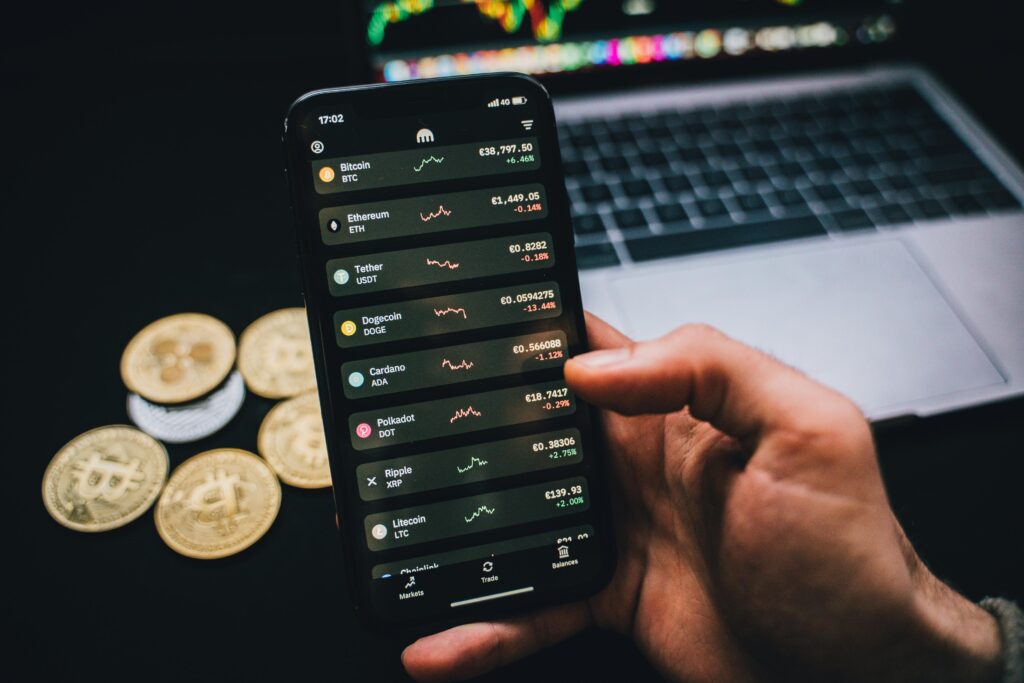Finance
AI in Financial Platforms & Market Dynamics: Transforming the Future of Finance

Introduction
Artificial Intelligence (AI) is no longer just a tech buzzword — it’s the driving force behind the next generation of financial platforms. From intelligent chatbots that offer personalized investment advice to algorithms predicting stock trends with unprecedented accuracy, AI is reshaping market dynamics at lightning speed.
In this blog, we’ll explore how AI is changing financial platforms, influencing global markets, and what it means for investors in 2025 and beyond.

1. AI-Powered Financial Tools
Modern financial platforms are integrating AI to offer real-time insights, predictive analytics, and personalized recommendations.
- Smart Chatbots: Platforms like Google Finance now feature AI chatbots that answer queries, summarize market news, and guide investment decisions.
- Advanced Charting: AI-powered tools analyze trends and create visually clear, data-rich market charts for traders.
- Crypto Integration: Real-time AI insights on cryptocurrencies are becoming a staple for multi-asset investors.
Why It Matters: AI tools help reduce human error, improve investment timing, and simplify complex data for everyday users.
2. Impact on Market Dynamics
AI is influencing how markets move — and investors are taking notice.
- Faster Reactions: AI-driven trading systems react to news in milliseconds, leading to rapid price movements.
- Predictive Market Sentiment: AI tools scan social media, news sites, and reports to gauge investor mood before it impacts the market.
- Institutional Adoption: Big hedge funds and banks are doubling down on AI to manage portfolios and reduce risk.
Example: The Nasdaq recently hit record highs as AI-powered analysis predicted early rate cuts from the U.S. Federal Reserve, prompting a market rally.

3. Benefits for Investors
- 24/7 Monitoring: AI works round the clock, tracking opportunities across multiple markets.
- Reduced Costs: Automation lowers transaction fees and operational expenses.
- Accessibility: Even beginner investors can use AI tools to make smarter financial decisions.
4. Challenges & Risks
While AI offers groundbreaking opportunities, it comes with potential downsides:
- Overreliance on Algorithms: Blind trust in AI predictions can lead to massive losses in unpredictable market events.
- Data Privacy Concerns: AI platforms collect sensitive financial data that must be safeguarded.
- Market Volatility: High-frequency AI trading can sometimes cause extreme price swings.
5. The Future of AI in Finance
The future will bring hyper-personalized investment platforms powered by AI. Expect:

- Integrated Virtual Advisors that understand your financial goals and risk tolerance.
- Voice-Activated Trading for instant execution of investment ideas.
- AI-Regulated Markets to ensure transparency and fairness.
Conclusion
AI in financial platforms is not just a trend — it’s a permanent shift in the way markets operate. For investors, embracing these tools means staying competitive, reducing risks, and seizing opportunities faster than ever.
As AI technology advances, financial markets will become smarter, faster, and more connected — making now the perfect time to adapt.

Finance
Vanguard Mutual Funds: A Complete Guide for Smart Investors

Introduction
When it comes to long-term investing, few names carry as much weight and trust as Vanguard. Known for its low fees, investor-first philosophy, and broad diversification, Vanguard has become a cornerstone for both beginner and professional investors worldwide.
Founded by John C. Bogle in 1975, Vanguard revolutionized the investment world by introducing the first index mutual fund, allowing everyday investors to own a slice of the market at a fraction of the cost. Today, Vanguard manages over $8 trillion in global assets, making it one of the largest and most respected investment companies in the world.
In this guide, we’ll explore what Vanguard mutual funds are, how they work, the different types, best-performing options, and how to choose the right one for your financial goals.
What Are Vanguard Mutual Funds?
Understanding Mutual Funds
A mutual fund is a professionally managed investment that pools money from many investors to buy a diversified portfolio of stocks, bonds, or other securities. Each investor owns shares of the fund, representing a proportional stake in its holdings.
The goal is to offer diversification, convenience, and professional management all in a single investment.
Vanguard’s Approach
Vanguard stands out because of its unique ownership structure. Unlike most investment companies that are owned by shareholders seeking profits, Vanguard is owned by its funds, which in turn are owned by the investors. This structure allows Vanguard to operate “at cost”, returning profits to investors in the form of lower fees.
This investor-first model is what made Vanguard famous for low expense ratios, often less than 0.10%, compared to the industry average of over 1%.
Types of Vanguard Mutual Funds
Vanguard offers a wide range of mutual funds to suit different investment goals and risk levels. Let’s explore the main categories.
1. Index Funds
Vanguard’s most popular products are index mutual funds. These funds aim to track the performance of a specific market index (like the S&P 500) rather than beat it.
Examples:
- Vanguard 500 Index Fund (VFIAX) – Tracks the S&P 500, offering exposure to the largest U.S. companies.
- Vanguard Total Stock Market Index Fund (VTSAX) – Covers the entire U.S. stock market, including small-, mid-, and large-cap stocks.
- Vanguard Total International Stock Index Fund (VTIAX) – Provides exposure to non-U.S. markets.
Why choose it?

- Low cost
- Broad diversification
- Historically strong long-term returns
Index funds are ideal for investors who believe in passive investing a “buy and hold” strategy proven to outperform most active managers over time.
2. Actively Managed Funds
Unlike index funds, actively managed funds employ professional fund managers who try to outperform the market by carefully selecting investments.
Examples:
- Vanguard Windsor Fund (VWNDX) – Focuses on undervalued large U.S. companies.
- Vanguard Primecap Fund (VPMCX) – Targets companies with strong growth potential.
- Vanguard Explorer Fund (VEXPX) – Invests in smaller companies with higher growth opportunities.
Why choose it?
- Potential for above-average returns
- Professional management and research
- Suitable for investors willing to accept slightly higher fees for potential performance
3. Bond Funds
Vanguard’s bond funds focus on income generation and capital preservation. These are perfect for conservative investors or retirees looking for stability.
Examples:
- Vanguard Total Bond Market Index Fund (VBTLX) – Tracks the U.S. bond market, including government and corporate bonds.
- Vanguard Intermediate-Term Investment-Grade Fund (VFICX) – Focuses on medium-term, high-quality corporate bonds.
- Vanguard Long-Term Bond Index Fund (VBLAX) – Invests in long-term government and corporate bonds for higher yields.
Why choose it?
- Regular income through interest payments
- Lower volatility than stocks
- Balances risk in a diversified portfolio
4. Target Retirement Funds
These funds automatically adjust their asset allocation over time based on a target retirement year. They start out aggressive and become more conservative as you near retirement.
Examples:
- Vanguard Target Retirement 2040 Fund (VFORX) – For those retiring around 2040.
- Vanguard Target Retirement 2060 Fund (VTTSX) – For younger investors aiming for long-term growth.
Why choose it?
- Hands-off investing
- Automatic rebalancing
- Ideal for retirement planning
5. Sector and Specialty Funds
Vanguard also offers sector-based funds focusing on specific industries or themes.
Examples:
- Vanguard Real Estate Index Fund (VGSLX) – Invests in REITs (real estate investment trusts).
- Vanguard Health Care Fund (VGHCX) – Focuses on healthcare and pharmaceutical companies.
- Vanguard Energy Fund (VGENX) – Targets oil, gas, and renewable energy industries.
Why choose it?
- Focused exposure to fast-growing industries
- Can enhance diversification or complement a core portfolio
Why Vanguard Mutual Funds Are Popular
1. Low Expense Ratios
Vanguard’s fees are among the lowest in the industry. The lower the cost, the more returns stay in your pocket. Over 20–30 years, this can mean tens of thousands of dollars more in gains.
2. Diversification
By investing in just one Vanguard fund, you can own hundreds or even thousands of securities, spreading risk across multiple sectors and countries.
3. Accessibility
Most Vanguard mutual funds can be started with as little as $1,000 to $3,000, making them accessible to small investors.
4. Long-Term Performance
Vanguard’s index funds have historically delivered steady, long-term returns aligned with the overall market, which has averaged around 7–10% annually.
5. Trusted Reputation
For nearly 50 years, Vanguard has built a reputation for integrity, transparency, and investor education values that make it a top choice worldwide.
How to Invest in Vanguard Mutual Funds
Step 1: Define Your Goals
Ask yourself:
- Am I investing for retirement, education, or wealth growth?
- What’s my risk tolerance conservative, balanced, or aggressive?
Step 2: Choose Fund Types
If you want simplicity and diversification, go for:
- VTSAX (Total Stock Market Index Fund) for broad stock exposure.
- VBTLX (Total Bond Market Index Fund) for income and stability.
- Or combine both in a 60/40 ratio for a balanced portfolio.
Step 3: Open a Vanguard Account
Visit vanguard.com to open an account. You can choose between:
- Individual or Joint Brokerage Account
- Traditional or Roth IRA
- Trust or Custodial Account
Step 4: Start Investing
Deposit your funds and choose your preferred mutual fund. Many investors also set up automatic monthly investments to build wealth consistently.
Step 5: Monitor and Rebalance
Review your portfolio once or twice a year. Rebalance when your asset allocation drifts from your target (e.g., if stocks grow faster than bonds).

Top Vanguard Mutual Funds in 2025
| Fund Name | Type | 5-Year Annual Return | Expense Ratio |
|---|---|---|---|
| Vanguard 500 Index Fund (VFIAX) | Stock Index | ~10.3% | 0.04% |
| Vanguard Total Stock Market Index Fund (VTSAX) | Stock Index | ~9.8% | 0.04% |
| Vanguard Dividend Growth Fund (VDIGX) | Active Stock | ~8.6% | 0.27% |
| Vanguard Total Bond Market Index Fund (VBTLX) | Bond Index | ~4.1% | 0.05% |
| Vanguard Target Retirement 2040 Fund (VFORX) | Target Date | ~8.2% | 0.08% |
(Returns are approximate and can vary based on market conditions.)
Risks to Consider
While Vanguard funds are considered safe and reliable, every investment carries risk.
1. Market Volatility
Stock-based funds can lose value during market downturns. Long-term investors should stay patient and avoid emotional selling.
2. Interest Rate Risk
Bond funds may decline when interest rates rise, though they still provide stability and income over time.
3. Inflation Risk
Cash or bond-heavy portfolios might not keep pace with inflation, so balancing with equities is important.
4. International Risk
Global funds face currency fluctuations and geopolitical uncertainty. Diversification helps reduce these risks.
Advantages of Vanguard Over Other Fund Companies
| Feature | Vanguard | Competitors (Fidelity, Schwab) |
|---|---|---|
| Expense Ratios | Lowest industry-wide | Slightly higher |
| Ownership Structure | Owned by investors | Owned by shareholders |
| Fund Variety | 200+ mutual funds | Similar range |
| Passive Index Leadership | Pioneer | Strong but secondary |
| Long-Term Philosophy | Yes | Varies by company |
Vanguard’s structure ensures investor profits come first, not corporate gains — a philosophy unmatched in the industry.
Vanguard vs. ETFs
While both mutual funds and ETFs (exchange-traded funds) are popular at Vanguard, they differ slightly.
| Feature | Mutual Fund | ETF |
|---|---|---|
| Minimum Investment | $1,000–$3,000 | 1 share (~$100) |
| Trading | Once per day | Throughout the day |
| Auto Investing | Yes | Limited |
| Tax Efficiency | Moderate | Higher |
| Ideal For | Long-term investors | Active traders |
If you prefer automatic investing and a hands-off approach, mutual funds are perfect. ETFs suit those who like flexibility and real-time trading.
Frequently Asked Questions (FAQ)
1. Are Vanguard mutual funds safe?
Yes. Vanguard funds are highly regulated, diversified, and managed by one of the world’s most trusted firms. While not risk-free, they are considered secure for long-term investing.
2. Can I lose money in a Vanguard mutual fund?
Yes, in the short term due to market fluctuations. However, over long periods, diversified Vanguard funds historically deliver positive returns.
3. What is the minimum investment amount?
Most Vanguard mutual funds require between $1,000 and $3,000 to start. Some retirement accounts may have lower limits.
4. How do I withdraw money from my Vanguard mutual fund?
You can sell your fund shares anytime through your Vanguard account and transfer the cash to your bank account within a few business days.
5. Are Vanguard funds good for beginners?
Absolutely! Their index and target retirement funds are ideal for new investors who want simplicity and long-term growth.
Conclusion
Vanguard mutual funds are the gold standard for long-term investing — offering affordability, transparency, and performance consistency. Whether you’re saving for retirement, building wealth, or diversifying your portfolio, Vanguard provides reliable solutions to fit your financial journey.
By choosing the right mix of stock, bond, and target-date funds, you can create a balanced portfolio that grows steadily over time while minimizing risk. Vanguard’s founder, John Bogle, once said, “The miracle of compounding returns is overwhelmed by the tyranny of compounding costs.” That’s why Vanguard’s low-cost philosophy continues to help millions achieve financial independence.
In 2025 and beyond, Vanguard mutual funds remain a smart, proven path toward achieving your financial goals with confidence and stability.
Blog
FintechZoom Crypto Guide: Exploring the World of Cryptocurrency and Digital Finance

Introduction
The rise of cryptocurrency has completely transformed the way we think about money, transactions, and financial freedom. What began with the launch of Bitcoin in 2009 has now grown into a trillion-dollar industry, attracting investors, businesses, and governments worldwide. Cryptocurrency is no longer just a futuristic concept it is shaping the present and driving the future of finance.
One platform that has gained attention for providing in-depth coverage of digital assets is FintechZoom. Known for its financial insights and up-to-date market reports, FintechZoom Crypto has become a reliable resource for those who want to understand cryptocurrencies, track live prices, and make informed investment decisions.
In this guide, we will dive deep into the world of cryptocurrency with insights from FintechZoom, exploring how digital assets work, the role of blockchain technology, popular crypto coins, trading strategies, and what the future holds for the crypto market.
What is Cryptocurrency?
Cryptocurrency is a digital or virtual form of money that uses cryptography for security. Unlike traditional currencies issued by governments (fiat money), cryptocurrencies are decentralized, meaning they are not controlled by central banks. Instead, they operate on blockchain technology, which ensures transparency, security, and immutability of transactions.

- Bitcoin (BTC) was the first cryptocurrency, created by the mysterious figure Satoshi Nakamoto in 2009. It introduced the concept of a decentralized currency that allows peer-to-peer transactions without intermediaries like banks.
- Over the years, thousands of cryptocurrencies have emerged, each serving unique purposes—from Ethereum (ETH) enabling smart contracts to Ripple (XRP) supporting cross-border payments.
Today, cryptocurrency is used not only as an investment asset but also for payments, decentralized finance (DeFi), gaming, and even NFTs (non-fungible tokens).
FintechZoom and the World of Crypto
FintechZoom.com has become a trusted name in financial reporting, offering real-time updates on stocks, banking, and crypto. For digital currency enthusiasts, FintechZoom Crypto serves as a hub of:
- Latest news on Bitcoin, Ethereum, and altcoins.
- Live price tracking with detailed charts.
- Market analysis for traders and investors.
- Educational resources for beginners entering the crypto space.
By providing both beginner-friendly content and advanced market insights, FintechZoom makes cryptocurrency more accessible to everyone.
Popular Cryptocurrencies Featured on FintechZoom
FintechZoom frequently covers the world’s leading cryptocurrencies. Here are some of the most discussed coins on their platform:
1. Bitcoin (BTC)
The pioneer of cryptocurrencies and still the most valuable, Bitcoin is often referred to as “digital gold.” Investors view it as a store of value and hedge against inflation. FintechZoom provides BTC price charts, market trends, and forecasts.
2. Ethereum (ETH)
Ethereum is not just a currency it is a platform for smart contracts and decentralized applications (dApps). FintechZoom highlights Ethereum’s importance in powering DeFi and NFTs.
3. Ripple (XRP)
Focused on fast and affordable cross-border transactions, Ripple has become popular among banks and financial institutions. FintechZoom updates investors on XRP’s adoption and legal challenges.
4. Litecoin (LTC)
Created as a lighter version of Bitcoin, Litecoin offers faster transaction speeds and is often referred to as “silver to Bitcoin’s gold.”
5. Cardano (ADA) & Solana (SOL)
Both are known as Ethereum competitors, offering scalability and lower fees. FintechZoom provides insights into their growing ecosystems.
By tracking these cryptocurrencies, FintechZoom helps investors understand where the market is headed.
Crypto Trading with FintechZoom
One of FintechZoom’s strongest features is its support for crypto traders. The platform provides:
- Live crypto price tracking with charts and graphs.
- Market analysis to understand bullish and bearish trends.
- Guides on trading strategies, including day trading, swing trading, and long-term holding.
For example, Bitcoin’s price can change dramatically within hours, and Ethereum often reacts to news about blockchain upgrades. FintechZoom helps traders stay informed, reducing risks while maximizing opportunities.
The Role of Blockchain Technology
Cryptocurrency cannot exist without blockchain technology. A blockchain is a distributed digital ledger that records transactions across a network of computers. Each transaction is grouped into a block, linked to the previous one, forming a chain—hence the name blockchain.
Key benefits of blockchain include:
- Decentralization – No single entity controls the system.
- Transparency – Transactions are publicly visible.
- Security – Cryptography ensures data integrity.
- Immutability – Once added, data cannot be altered.
FintechZoom emphasizes blockchain’s role beyond cryptocurrencies covering its impact on banking, healthcare, supply chain, and government services.
FintechZoom Crypto and Investment Strategies
Investing in cryptocurrency can be profitable, but it also carries risks due to volatility. FintechZoom provides expert-backed strategies such as:
1. Long-Term Holding (HODL)
Many investors buy Bitcoin or Ethereum and hold them for years, believing their value will increase.
2. Day Trading
Traders buy and sell cryptocurrencies within hours or days, benefiting from small price movements.
3. Diversification
Instead of putting all money in one coin, investors spread it across multiple cryptos to reduce risk.
4. Risk Management
FintechZoom often stresses the importance of stop-loss strategies, portfolio balancing, and only investing what one can afford to lose.
By offering analysis and predictions, FintechZoom helps both beginners and experts navigate the volatile crypto market.

The Future of Cryptocurrency
Cryptocurrency is still evolving, and its future looks promising but uncertain. FintechZoom predicts several trends that may shape the next decade:
- Wider Adoption – More businesses are accepting Bitcoin and stablecoins as payment.
- Government Regulation – Countries are introducing crypto tax laws and compliance requirements.
- Central Bank Digital Currencies (CBDCs) – Governments are exploring blockchain-backed national currencies.
- Integration with Web3 & Metaverse – Cryptocurrencies will power decentralized internet and virtual economies.
- Increased Security & Scalability – Next-gen blockchain solutions will address current challenges.
While there are risks of fraud, hacks, and market crashes, the opportunities in crypto remain massive.
Conclusion
The world of cryptocurrency is exciting, innovative, and rapidly changing. From Bitcoin’s rise as digital gold to the growth of Ethereum-powered applications and the emergence of new altcoins, crypto continues to reshape global finance.
Platforms like FintechZoom Crypto are essential for investors and enthusiasts, providing real-time updates, expert analysis, and educational resources. Whether you are a beginner exploring Bitcoin for the first time or an experienced trader looking for market signals, FintechZoom ensures you stay ahead in the crypto world.
As digital finance expands, one thing is clear: cryptocurrency is here to stay, and FintechZoom will remain a guiding light for those navigating this dynamic financial revolution.
Business
Gold Investment: A Complete Guide to Securing Wealth

Introduction
Gold has fascinated humankind for thousands of years. From being a symbol of power and prestige in ancient civilizations to acting as a modern safe-haven asset, gold continues to hold an important place in the global financial system. When people think about long-term wealth preservation, gold investment naturally comes to mind. It is often considered one of the most reliable ways to protect wealth against inflation, economic instability, and currency devaluation.
In today’s uncertain global economy, investors seek assets that can offer stability and hedge risks. Stocks may rise and fall, real estate markets may fluctuate, and currencies may lose value—but gold remains timeless. This article explores everything you need to know about gold investment: its history, types, benefits, risks, and strategies for modern investors.
The Historical Importance of Gold
Gold has been used as a form of money, trade, and store of value for thousands of years. Ancient Egyptians, Romans, and Greeks used gold coins as currency. Empires stored gold to demonstrate their power and wealth. Even in modern history, the Gold Standard system tied the value of national currencies directly to gold reserves until the 20th century.
Though fiat currencies (like the U.S. Dollar or Euro) replaced gold-backed money, the metal still plays a central role in financial markets. Central banks worldwide hold massive gold reserves as part of their strategy to secure national economies.
Why Invest in Gold?
Investing in gold is not just about owning a shiny metal it is about wealth protection and financial security. Here are the top reasons to invest in gold:

1. Hedge Against Inflation
When the cost of living rises, the value of paper currency decreases. Gold, however, often rises in value during inflationary periods, making it a natural hedge.
2. Safe Haven During Crises
Economic recessions, wars, and political instability often drive investors toward gold. It retains its value even during global uncertainty.
3. Portfolio Diversification
Diversification reduces investment risk. Gold is a non-correlated asset, meaning its price doesn’t always move with stocks or bonds. Adding gold balances a portfolio.
4. Preservation of Wealth
For centuries, gold has maintained its purchasing power. A coin of gold that bought goods 100 years ago could still buy the same goods today, unlike paper money.
5. High Liquidity
Gold can be easily bought or sold worldwide. It is universally recognized and valued, making it one of the most liquid investments.
Types of Gold Investments
When people think of gold investment, they often imagine gold bars or jewelry. However, there are multiple modern ways to invest in gold, each with unique benefits and risks.
1. Physical Gold
- Gold Bars & Coins: Tangible, safe-haven assets. Investors can buy from banks or dealers. Storage and insurance costs may apply.

- Gold Jewelry: Common in South Asia and the Middle East. While beautiful, jewelry includes making charges, making it less profitable as an investment.
2. Gold ETFs (Exchange Traded Funds)
Gold ETFs are stock market-traded funds that track the price of gold. They allow investors to gain exposure without owning physical gold.
3. Gold Mutual Funds
These funds invest in gold mining companies or gold-backed assets. They are managed by professionals and provide diversified exposure.
4. Gold Futures & Options
Traded in commodity markets, these are contracts to buy or sell gold at a future date. They are riskier and suitable for advanced investors.
5. Gold Mining Stocks
Investing in companies that mine gold can provide high returns. However, they are subject to operational risks and market fluctuations.
6. Digital Gold
A new-age method, digital gold allows investors to buy gold online in small quantities, stored securely in vaults. It is becoming popular due to convenience.
Risks of Gold Investment
While gold is a safe asset, it is not without risks:
- Price Volatility: Gold prices can fluctuate in the short term due to global demand and geopolitical tensions.
- No Passive Income: Unlike stocks (dividends) or real estate (rent), gold does not generate income.
- Storage Costs: Physical gold requires secure storage and insurance.
- Market Risk for Derivatives: Futures and mining stocks carry high risks.
Gold vs. Other Investments
How does gold compare with stocks, real estate, and cryptocurrencies?
- Gold vs. Stocks: Stocks may provide higher returns, but they are riskier. Gold offers stability.
- Gold vs. Real Estate: Real estate generates rental income, but it is less liquid. Gold is easily tradable.
- Gold vs. Cryptocurrencies: Both are seen as alternative investments. However, gold has centuries of history, while crypto is highly volatile.
Best Strategies for Gold Investment
To maximize returns and minimize risks, investors should adopt smart strategies:

- Diversify: Don’t put all money into gold. Use it as a hedge (5–15% of your portfolio).
- Long-Term Holding: Gold is best held long term to preserve wealth.
- Buy During Dips: Gold prices rise and fall. Buying during market corrections ensures better returns.
- Choose the Right Form: Physical gold for security, ETFs for convenience, and futures for high-risk trading.
- Keep an Eye on Global Events: Inflation, wars, and currency fluctuations directly impact gold.
Gold Price Trends and Outlook
Gold prices have generally trended upward over the past decades. For example:

- In the 1970s, gold traded at $35 per ounce.
- By 2011, prices crossed $1,800 per ounce during the financial crisis.
- In 2020, amid the COVID-19 pandemic, gold reached over $2,000 per ounce.
Experts predict gold will remain strong due to:
- Increasing inflation globally.
- Geopolitical tensions (wars, sanctions, global rivalries).
- Growing central bank purchases.
How Much Gold Should You Own?
Financial advisors often recommend 5–15% of total investment portfolio in gold. This ensures protection without overexposing to price fluctuations.
Practical Tips for Gold Investors
- Buy gold from reputable dealers or trusted platforms.
- Verify purity (24K for purest gold, 22K for jewelry).
- For physical gold, ensure safe storage.
- For digital or ETF investments, choose trusted providers.
- Track global market trends before making decisions.
Future of Gold Investment
With rising digital adoption, digital gold and gold ETFs are becoming mainstream. As global uncertainties continue, central banks and individuals are expected to increase gold holdings. Unlike other assets that may lose relevance, gold’s intrinsic value ensures its role in future financial systems.
Conclusion
Gold investment is more than a tradition it’s a strategy for financial stability. Whether you are an experienced investor or a beginner, adding gold to your portfolio can safeguard your wealth against inflation, economic uncertainty, and market volatility. While it may not deliver rapid profits like stocks or crypto, its value as a long-term wealth preserver makes it one of the smartest investments you can make.
By understanding the different types, risks, and strategies, you can make informed decisions and build a secure future.
-

 Fashion3 months ago
Fashion3 months agoThese ’90s Fashion Trends Are Making a Big Comeback in 2025
-

 Fashion3 months ago
Fashion3 months agoTop Fashion Trends to Follow in August 2025
-

 How-To Tutorials & Troubleshooting3 months ago
How-To Tutorials & Troubleshooting3 months agoHow to Fix Missing Pantone Color Books in Adobe Illustrator 2024-2025 (Free and Easy Method)
-

 Entertainment3 months ago
Entertainment3 months agoTrending Soundtrack: “KPop Demon Hunters”
-

 Entertainment3 months ago
Entertainment3 months agoSquid Game Season 2: Deadlier Games, Deeper Secrets & Darker Drama



